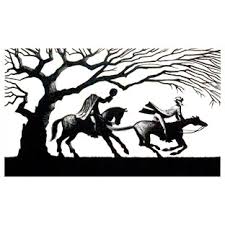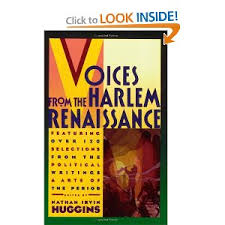skip to main |
skip to sidebar
Blogging down Route 66:The Road to Americana Part 1
 When you think of uniquely
American culture, what comes to mind? The American Melting Pot? Bald Eagles?
Tailgating, cheap beer and football? Put all those together, and you get
Americana- which is basically defined as artifacts related to the history,
geography, and culture of America, things that have a distinctly American
flavor. America is a geographically large and diverse country, having been
shaped by Native American culture and history, and its immigrant heritage, with
people from every corner of the world settling here and adding to the exchange
of cultures. All this has given birth to
a number of themes, styles, and traditions that are distinctly American, many
of which are seen in the literature that we have created. Alright, it’s a bit
hard to actually define Americana, but you know it when you see it, I think. What
does or what does not fall under Americana can be confusing, but I’m going to
try anyway. Tall Tales, ghost stories, poems, I am going to try to figure this
out! Wish me luck, as I drive down the Route 66 of Americana!
When you think of uniquely
American culture, what comes to mind? The American Melting Pot? Bald Eagles?
Tailgating, cheap beer and football? Put all those together, and you get
Americana- which is basically defined as artifacts related to the history,
geography, and culture of America, things that have a distinctly American
flavor. America is a geographically large and diverse country, having been
shaped by Native American culture and history, and its immigrant heritage, with
people from every corner of the world settling here and adding to the exchange
of cultures. All this has given birth to
a number of themes, styles, and traditions that are distinctly American, many
of which are seen in the literature that we have created. Alright, it’s a bit
hard to actually define Americana, but you know it when you see it, I think. What
does or what does not fall under Americana can be confusing, but I’m going to
try anyway. Tall Tales, ghost stories, poems, I am going to try to figure this
out! Wish me luck, as I drive down the Route 66 of Americana!
 I guess the best place to
start is at the beginning, or at least the beginning of classic American
traditions we know today. Washington
Irving (1783-1859) was one of the earliest American writers who made a huge
international splash. He’s also one of the pioneers of the short story as a
legitimate literary style, with a distinct American flavor. If you look his two
most famous stories, ‘The Legend of Sleepy Hollow’, and ‘Rip Van Winkle’, you
notice some very similar themes. They both take place in small farming
communities in the early days of the United States as a country separated from
England, they both deal with the conflict between the contemporary and
supernatural worlds, and they both warn about the dangers of the woods. Both
are stories based on Old World tales of ghosts and curses, with Irving applying
them to the New World in some of the earliest stories in the American tradition
of Romanticism. So, we owe a lot to Irving, for his contribution to American
literature and culture, and many a Halloween haunted trail. Oh, he also had a
particular nickname for New York City: Gotham. This was later borrowed by some
comic book writers who were creating this new character, around sort of bat
theme…. Yeah, it turns out that Christopher Nolan owes Irving a writer’s credit
or something. Strange how often literary creations can end up influencing each
other, even influencing different genres and time periods. Speaking of…
Tall Tale America, a Legendary History of our Humorous Heroes
I guess the best place to
start is at the beginning, or at least the beginning of classic American
traditions we know today. Washington
Irving (1783-1859) was one of the earliest American writers who made a huge
international splash. He’s also one of the pioneers of the short story as a
legitimate literary style, with a distinct American flavor. If you look his two
most famous stories, ‘The Legend of Sleepy Hollow’, and ‘Rip Van Winkle’, you
notice some very similar themes. They both take place in small farming
communities in the early days of the United States as a country separated from
England, they both deal with the conflict between the contemporary and
supernatural worlds, and they both warn about the dangers of the woods. Both
are stories based on Old World tales of ghosts and curses, with Irving applying
them to the New World in some of the earliest stories in the American tradition
of Romanticism. So, we owe a lot to Irving, for his contribution to American
literature and culture, and many a Halloween haunted trail. Oh, he also had a
particular nickname for New York City: Gotham. This was later borrowed by some
comic book writers who were creating this new character, around sort of bat
theme…. Yeah, it turns out that Christopher Nolan owes Irving a writer’s credit
or something. Strange how often literary creations can end up influencing each
other, even influencing different genres and time periods. Speaking of…
Tall Tale America, a Legendary History of our Humorous Heroes
 Americans have long been
fascinated by the outdoors, by the wildness of nature, and what better place to
exemplify that then the American (often wild) West? That’s how we get to tall tales.
Tall tales were sort of like old timey Chuck Norris jokes. They were a bragging
contest about how big and bad they could make the hero of the story sound. Sometimes
called Big Men stories (although they weren’t actually just about the guys) these
were larger than life tales of courage, strength, and cleverness, usually told
in a humorous, good natured way. The heroes range from working men like John
Henry, the railroad man who died proving a man could do the work of a machine,
or Paul Bunyan, the lumberjack with the size and power of a giant, to wild
frontiersmen like Pecos Bill, who lassoed a tornado, or Davy Crockett, part
time hunter and explorer, part time politician. Those are just a few of the
many heroes of Tall Tale stories, more of which can be read about in Tall Tale America, which not only lists
several of the tales, but also gives some historical context about American
folklore, and how it differs from lore in other parts of the world. The book
frequently uses regional dialects in the stories, which can get rather
distracting, and it’s definitely an older book, but it’s still a good place to
start looking if you’re interested in knowing more about these American myths.
Americans have long been
fascinated by the outdoors, by the wildness of nature, and what better place to
exemplify that then the American (often wild) West? That’s how we get to tall tales.
Tall tales were sort of like old timey Chuck Norris jokes. They were a bragging
contest about how big and bad they could make the hero of the story sound. Sometimes
called Big Men stories (although they weren’t actually just about the guys) these
were larger than life tales of courage, strength, and cleverness, usually told
in a humorous, good natured way. The heroes range from working men like John
Henry, the railroad man who died proving a man could do the work of a machine,
or Paul Bunyan, the lumberjack with the size and power of a giant, to wild
frontiersmen like Pecos Bill, who lassoed a tornado, or Davy Crockett, part
time hunter and explorer, part time politician. Those are just a few of the
many heroes of Tall Tale stories, more of which can be read about in Tall Tale America, which not only lists
several of the tales, but also gives some historical context about American
folklore, and how it differs from lore in other parts of the world. The book
frequently uses regional dialects in the stories, which can get rather
distracting, and it’s definitely an older book, but it’s still a good place to
start looking if you’re interested in knowing more about these American myths.
 The Harlem Renaissance
was an explosion of African American culture, centered in the NYC neighborhood
of Harlem in the 1920s. This book gives both a history of the Harlem
Renaissance, as well as examples of the poetry and essays of the time, covering
authors such as Langston Hughes, Zora Neale Hurston, and Wallace Thurman. This
is just a small sample of the work coming from this era, and from African
American culture in general. Much of this material deals with African American
identity; the writers and poets of the time were attempting to find where they
stood in a country that seemed to be progressing, but no one was sure how much.
With the book having so much history in it,
it may be more for history buffs than poetry lovers, but it has some
great writing here, and is a good book to check out if you’re a fan of history,
writing, or art (of all kinds).
The Harlem Renaissance
was an explosion of African American culture, centered in the NYC neighborhood
of Harlem in the 1920s. This book gives both a history of the Harlem
Renaissance, as well as examples of the poetry and essays of the time, covering
authors such as Langston Hughes, Zora Neale Hurston, and Wallace Thurman. This
is just a small sample of the work coming from this era, and from African
American culture in general. Much of this material deals with African American
identity; the writers and poets of the time were attempting to find where they
stood in a country that seemed to be progressing, but no one was sure how much.
With the book having so much history in it,
it may be more for history buffs than poetry lovers, but it has some
great writing here, and is a good book to check out if you’re a fan of history,
writing, or art (of all kinds).
I’m going to exit the
highway and rest now….but check back for Part Two!

No comments:
Post a Comment